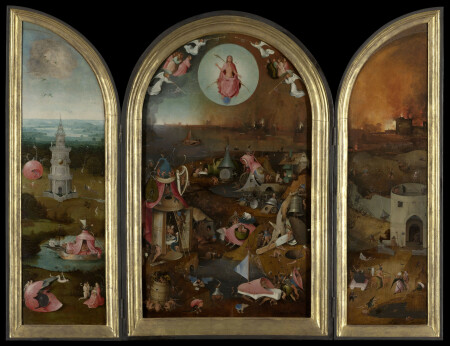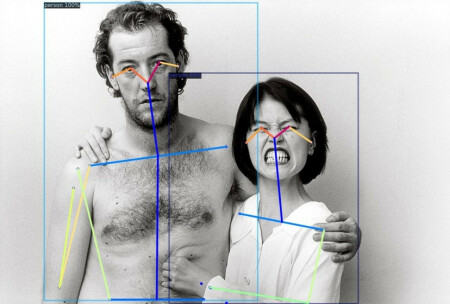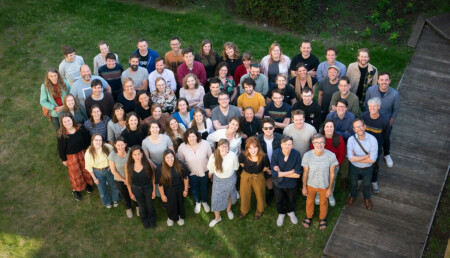2021 in brief
In 2021, we made great progress in bringing the past back to life as well as preparing for tomorrow. We successfully completed several long-running digitisation projects and continued working to launch our revamped Archive for Education – with ever more possibilities for our growing group of users. On top of our regular work, we also forged some new plans for the future, which gained added momentum partly thanks to funding from the Flemish Resilience Recovery Plan.
The return to normality we’d hoped for didn’t quite fully materialise in 2021, but the successive waves of Covid impacted our work less than in 2020. The funds made available by the Flemish government as part of its recovery plan allowed the cultural sector to go full steam ahead with its digital transformation, and meemoo is ready to further embolden its commitment to this over the coming years.
Read about how we digitally safeguarded archival content in 2021, and made it accessible and usable, in this summary of our annual report.
Digitisation, sustainable storage and digital management
Safeguarding a wealth of audiovisual content and cultural heritage rests on several different foundations – the content first needs to be captured, for example, before being meticulously stored. With the right tools, organisations can preserve their own materials and make them accessible according to their wishes.
But let’s start at the beginning: converting the source materials into digital files. We converted 15,992 carriers in 2021 alone, and entered them into our digital archive. That’s 2.39% of the total number of our content partners’ carriers currently in our possession, which means we’ve already safeguarded around 80% of these carriers since we started our digitisation work in 2014.
From tape to byte
We convert audiovisual content into digital data in mass digitisation projects that run over several years. Describing every carrier that we’ve digitised this year is beyond the scope of this summary, but you can always check out our ongoing projects here. Suffice it to say, however, that we took some big steps forward in 2021, concluding some long-term digitisation projects as well as launching new ones.
CINEMATEK registered some 1,095 film reels on meemoo’s behalf, thereby completing the at-risk and affected film stock registration and digitising 1,109 films in total – in a project that will continue over the next few years;
We finished converting digital files from digital video formats such as DV, DVCAM and DVCPRO cassettes in 2021, with the final cassettes from TV Limburg. This project was also extended to include DV, DVCAM and DVCPRO cassettes with an HD signal;
We also concluded our broad VHS quality review, which we launched in 2019;
And we completed one of our longest-running digitisation projects in the form of the huge Betacam SP, Digital Betacam and Betacam SX digitisation project. With almost 170,000 successfully converted tapes, we’ve safeguarded large swathes of national and regional broadcasters’ cassette collections. The content on these carriers – from 78 different content partners – amounts to some 137,046 hours of viewing pleasure. We digitised our very first cassette as early as 2014;
The digital transfer of XDCAM discs is a special project for which we did the groundwork in 2018. In 2021, we were able to set out the process for sustainably preserving content from 6,000 carriers. The challenge in this project is that it falls somewhere between a digitisation and digital ingest process – because the XDCAM format uses multiple video compression methods and media container formats;
We use digitisation to rescue images and audio from gradual deterioration, but what happens if the audiovisual carrier has become irreparably damaged? In our SIRDUKE project, we joined forces with VRT, INA and Gecko to digitise 51 lacquer disks that were thought to be lost. Meemoo acted as initiator and coordinator on the Belgian side in this project. Digitisation Manager Brecht Declercq explains what makes this project so innovative.
Don't see a video? Please check your cookie settings so we can show this content to you too.
Edit your cookie preferences hereCan’t see the video? Please check that your cookie settings allow us to show you this content. You can change your cookie settings at the bottom of this page. Click on ‘Change your consent’ and select ‘Preferences’.
Down to the finest details on the canvas
It’s not just audiovisual media that finds its way into our archive; we also look after works of art. No fewer than 1,606 works were photographed at twelve Flemish museums and heritage institutions in 2021, resulting in 3,603 new images – on which you can see all the original works’ finest details – which equates to almost 18% growth year on year. The photographed works include 20 masterpieces that have never been captured before.
Safely stored in the archive system
On 31 December 2021, meemoo’s digital archive contained 6 million objects or 19.8 PB of content. 3.5 PB of this – 828,000 objects – found its way into the archive system in 2021. From the data centre in Ghent, our colleague Caroline explains what this impressive figure compares with in this short video:
Don't see a video? Please check your cookie settings so we can show this content to you too.
Edit your cookie preferences hereCan’t see the video? Please check that your cookie settings allow us to show you this content. You can change your cookie settings at the bottom of this page. Click on ‘Change your consent’ and select ‘Preferences’.
On the one hand, this growth came from digitally converting audiovisual content and artworks as described above, and on the other from the many files that flowed in digitally from our content partners. These are files that the organisations have digitally created themselves, or which have already been digitised (not by meemoo). Following on from various pilot projects in which we’ve been experimenting since 2018, our digital ingest service took greater shape in 2021.
We upscaled the importing process so more files can enter into the archive faster, and 36 content partners joined this new flow allowing us to welcome a total of 814,000 digital objects in 2021. This resulted in a digital influx increase of 2.74 PB.
‘No files were harmed in the process’
The best news is that we didn’t lose anything! To guarantee the quality of our preservation, an independent party used the Digital Sustainability Scoring Model and CoreTrustSeal, an international certification for digital archives, to conduct an audit of our digital archiving infrastructure in 2021.
This resulted in the scientific conclusion that ‘meemoo has a sound infrastructure and the necessary expertise to successfully fulfil its remit’. Based on the final report, we drew up some concrete action points to implement over the next few years. This involves formulating processes, structurally embedding knowledge, continuing to develop and use metadata, and translating copyright and privacy issues into appropriate metadata licences.
Making content accessible
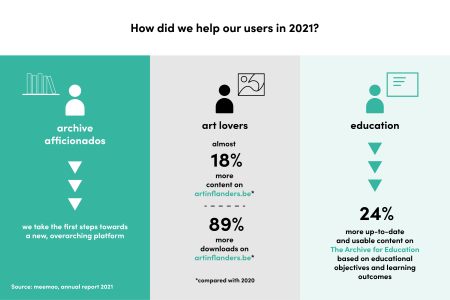
Towards a unified archive website
We are currently creating descriptions for nearly 1.5 million of our content partners’ archive items accessible on hetarchief.be. And our plans for the future are even more ambitious: as well as audiovisual content, you’ll also be able to search through other source materials, such as photos and newspapers, and look up content that’s in the public domain.
We know this sounds impressive, but still we’ve got a lot of work to do before it all becomes a reality. After all, it means bringing the News from the Great War, artinflanders.be, hetarchief.be and Catalogus Pro platforms all under one umbrella, so that you can search and, if allowed, view our content partners’ content all in one place.
Specifically, we hammered out the first wireframes and designs in 2021. Another major step forward was our decision to build the new visitor tool together with our content partners. This will mean visitors to their sites can view their digital archive content which is stored at meemoo. We also investigated possible (and desirable) business models for a platform for exchanging audiovisual content in Flanders. We welcomed 19 new partners to the platform where content partners can consult each other’s materials, Catalogus Pro, in 2021.
More archive for more education
After adding student access to The Archive for Education in the autumn of 2020, we then announced our new student area in 2021 – with webinars, screencasts and an extensive FAQ section to show them the way. They gained new ideas from the teaching inspiration pages, which are already bearing fruit: almost one in ten secondary education teachers with an account on the platform has already created a lesson assignment for their students! On 31 December 2021, we had 93,000 student accounts on The Archive for Education.
Teachers were able to browse and take advantage of up to 25% more updated content than in 2020, including video and audio clips selected on the basis of educational objectives and learning outcomes, so they’re definitely useful in lessons. The sources of this content have also become more diverse, with the number of different suppliers growing 73% to 58. On top of this, we also partnered with Fost Plus, VRT and the Red Star Line museum for specific teaching materials for The Archive for Education.
We also built the first bridge between our educational platform and artinflanders.be, with some collection pages created specifically for teaching purposes on this second platform. Teachers who want to give lessons on the Burgundians, Rubens or impressionism can find wonderful images with links to associated audiovisual collections at The Archive for Education.
All these initiatives didn’t go unnoticed: the number of primary school teachers with an account grew by 51%. We also welcomed 25% more secondary education teachers. To get all these teachers started on our platform, we organised basic and practical workshops in 2021, with our instructors running 84 different workshops in total.
You can find the most noteworthy figures here:

Gathering knowledge and giving advice
The world of archiving doesn’t stand still. Unfortunately, however, not all organisations have sufficient capacity or expertise to keep up with all developments – which is why we at meemoo keep our finger on the pulse and conduct our own tests and experiments to share the knowledge we gain with our network. We answered a record number of 327 helpdesk queries in 2021 and organised various training programmes for our content partners and organisations in the cultural field.
We also partnered in 25 ongoing projects to build knowledge and share it with cultural organisations. For example, we launched the SCALA initiative: a project in which we’re helping digital private law archives to develop a preservation system for very diverse collections. Together with Stad Gent (‘City of Ghent’), Design Museum Ghent, District09 and the residents of Ghent, we’re putting our weight behind the Collections of Ghent initiative. Our aim is to work together to create a digital collection of the city’s heritage that is available for all residents of Ghent to use. Read on to discover more about our projects, or browse here.
We focus on these five areas when gathering and sharing knowledge.

Metadata
Metadata is essential for managing your content in any type of collection or archive. This applies for the meemoo archive system, and also for our partners’ archives. We are therefore refining our metadata model, investigating new techniques for enriching metadata, and sharing our experiences.
This metadata model was the main focus of our work in 2021. We concentrated on our internal needs – ‘what does metadata need to do for us, our partners and the end users?’ – and on taking stock of our existing metadata models. We also examined the functional requirements in specialist working groups, for example on findability for the general public, which led to the first draft of an updated metadata model.
If you work with large volumes of archive content, manually adding metadata to each file is an endless task. We therefore researched different ways to create and add metadata automatically. One of these methods is facial recognition. And no, this isn’t sci-fi.
Can’t see the video? Please check that your cookie settings allow us to show you this content. You can change your cookie settings at the bottom of this page. Click on ‘Change your consent’ and select ‘Preferences’.
Rights and privacy
Respect for copyright and privacy is crucial for proper archive management. This doesn’t just mean the materials that meemoo stores for our partners, but also the various sources that organisations make public themselves. And because it’s not a simple matter, we support partners on our knowledge portals and in training sessions with concrete advice on how to describe and deal with copyright and privacy issues. In 2021, we paid close attention to this in a rights workshop on Public Domain Day and a practical copyright workshop. Rights and privacy issues are also important aspects for projects such as archiving social media, FAME and New Tidings.
Linked (open) data
There is still a lot of untapped potential when it comes to sharing and linking digital collections online. But unknown means unloved, so we’re looking in detail at how organisations can use this technique to enrich and open up their collections. And that’s why in 2021 we again organised the next edition of our Open Cultural Data Bootcamp, with the central question: ‘how do you make your cultural data not just open but also findable, accessible, exchangeable and (re-)usable?’
Don't see a video? Please check your cookie settings so we can show this content to you too.
Edit your cookie preferences hereCan’t see the video? Please check that your cookie settings allow us to show you this content. You can change your cookie settings at the bottom of this page. Click on ‘Change your consent’ and select ‘Preferences’.
One way of doing this is with IIIF technology. IIIF, short for International Image Interoperability Framework, is an emerging standard for exchanging images. We’ve been organising ‘IIIF Fridays’ with the IIIF peer group, to raise awareness about IIIF and make it more accessible, since 2020. We organised two in 2021 (in April and November), and ran the second phase of developing an IIIF image infrastructure for the Flemish Art Collection (VKC) ecosystem.
Preserving other and new formats
Social media is central to how we communicate on various social issues, but this fleeting content is rarely archived. We want to effect change here by developing best practices for capturing, archiving and accessing social media content. In 2021, we chose the tools that we’re going to test for this, set up the infrastructure, and analysed the social media streams that will be captured. We also took our first steps in actually capturing and archiving social media.
Digital strategy
Digital transformation is deeper and broader than just converting analogue formats into digital files. Organisations are learning to structure themselves differently, and meemoo is providing a helping hand. For example, we’re co-organiser of the Digital Leadership in the Cultural Sector training programme and we’re actively participating in consultations on digital transformation in the cultural sector, which are being coordinated by the Flemish Department of Culture, Youth and Media.
Another significant engagement is the support we’re providing in the initiative to deal with the backlog of digital collection registrations. In 2021, we assisted 26 projects in the preliminary stages of their funding applications, 16 of which were approved. We also supported 11 projects that were approved in 2020.
Together with our partners
Everything we do is aimed at helping other organisations or stakeholders in the cultural, media and government sectors with their digital archiving work, and making the wealth of Flemish archive content accessible. In 2021, we did this for a group of 164 content partners. Some of these partners were there to begin with, and others joined later. In 2021, we welcomed Erfgoedcel Leuven (heritage body), Stadsarchief Leuven (city archive), Plantin-Moretus Museum, Speelgoedmuseum Mechelen (toy museum) and Yper Museum.
Because our work has evolved so much over recent years, we also needed to update our agreements with partners. This included for our digital ingest operations, for example, as well as making new agreements for digitising and providing access to works of art and heritage objects.
Debbie Esmans, our Policy and Strategy Manager, explains more about the need for this updated agreements framework and our partners’ collaboration and participation within it:
Don't see a video? Please check your cookie settings so we can show this content to you too.
Edit your cookie preferences hereCan’t see the video? Please check that your cookie settings allow us to show you this content. You can change your cookie settings at the bottom of this page. Click on ‘Change your consent’ and select ‘Preferences’.
A boost for culture
2020 was a difficult year for the cultural sector as a whole. So, in order to give it a boost, the Flemish government made a considerable sum available in the form of recovery funding. This one-off financial boost ensured meemoo could accelerate four very specific digitisation initiatives in 2021 as well as develop new features on The Archive for Education.
GIVE - Gecoördineerd Initiatief voor Vlaamse Erfgoeddigitalisering (Coordinated Initiative for Flemish Heritage Digitisation)
Three digitisation projects and one project on automatic metadata enrichment are included under the umbrella name GIVE, which have all been made possible thanks to support from the European Regional Development Fund (ERDF). These projects are adding momentum to the digitisation and storage of unique content in Flanders.
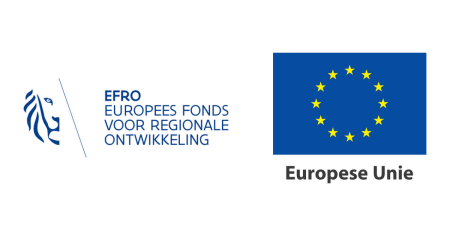

GIVE Primeur newspaper project
The GIVE Primeur newspaper project is aiming to mass digitise no fewer than 630,000 newspaper pages and make them accessible.

GIVE glass plates project
With the GIVE glass plates project, we want to digitally safeguard around 170,000 fragile glass plates so they can be stored sustainably and made accessible.
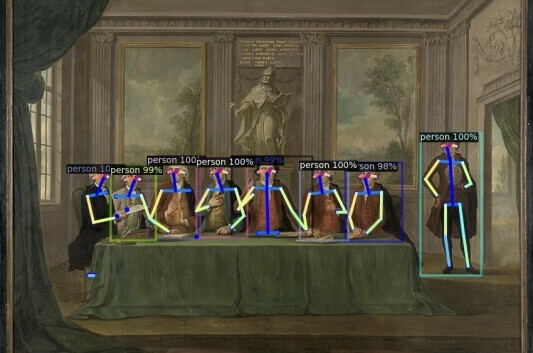
GIVE metadata project
The GIVE metadata project wants to make big strides forward with an automatic description process to fill the huge gaps of missing metadata in the meemoo archive system.
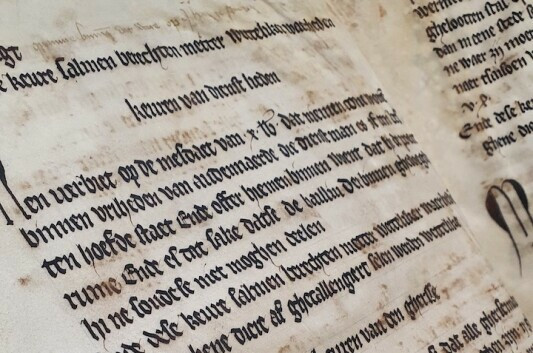
GIVE Flemish Masterpieces project
The GIVE Flemish Masterpieces project is providing high-quality digital reproductions of 2D materials, 3D objects and masterpieces on paper or parchment, so that they can be consulted without risk.
Essential features on The Archive for Education
The education sector has continued to digitise at a rapid rate over recent years. And investments in this digital transformation had become urgent, which is why the Flemish Department of Education and Training made €512,000 available in the framework of the Digisprong initiative for the continued development of The Archive for Education. We’re using this funding to research and develop extra features in three main areas:
promoting the sharing of information between teachers;
reinforcing collaboration and the exchanging of resources between educational platforms;
new teaching methods to promote blended learning.
In 2021, we focused on research and analysis, for example looking at how we could encourage the sharing of teaching materials and assignments between teachers on educational platforms such as KlasCement. Teachers were given the opportunity to have their say in a user survey.
We also collaborated on the VLAIO project ‘adaptations to educational innovation’ and analysed how teachers could create search-and-build assignments on the platform for their students in 2021.
Don't see a video? Please check your cookie settings so we can show this content to you too.
Edit your cookie preferences hereCan’t see the video? Please check that your cookie settings allow us to show you this content. You can change your cookie settings at the bottom of this page. Click on ‘Change your consent’ and select ‘Preferences’.
A future for Erfgoedplus and Erfgoedinzicht heritage databases
Alongside a vast amount of archival content, meemoo is temporarily hosting the Erfgoedplus heritage database from 2021. Heritage management bodies and holding organisations have been using the Erfgoedplus and Erfgoedinzicht heritage databases to register, manage and access their collections. These databases were set up for cities and provinces, but an integrated approach has become more pressing since 2019. Meemoo is therefore working on a solution.
The existing heritage databases will ultimately be replaced by new systems that focus on collection registration and management. We’re putting our weight behind this project together with the Flemish Department for Culture, Youth and Media, FARO and the former Flemish Art Collection (now part of meemoo). In 2021, this mainly took the form of operational maintenance, analyses and preparations for the project.
Behind the scenes
That’s right: 2021 was a busy but fruitful year for meemoo. Long-running projects drew to a conclusion and ambitious new initiatives were set up. We did all this with our familiar, loyal colleagues and some new temporary workers who put their best efforts into various projects. This means the meemoo team was comprised of 43 permanent employees, six temporary employees, three seconded teachers and five interns at the end of 2021. All in all a very passionate team with a solid vision for the future!
In 2021, we achieved €6,944,218 of income – most of which consists of operating and project funds from the Flemish Government – with €6,877,739 of expenditure. We had €324,674 more costs and €375,000 more income in total than anticipated in the annual budget. These differences can almost all be accredited to the launch of several additional assignments or new projects. The biggest chunks of the budget are taken up by personnel (€3,112,744), digitisation of audiovisual carriers (€930,270) and archive system infrastructure (€1,073,844).

